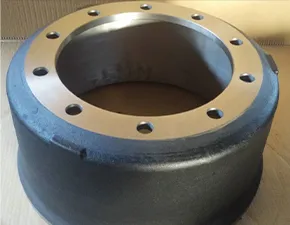
-
 Afrikaans
Afrikaans -
 Albanian
Albanian -
 Amharic
Amharic -
 Arabic
Arabic -
 Armenian
Armenian -
 Azerbaijani
Azerbaijani -
 Basque
Basque -
 Belarusian
Belarusian -
 Bengali
Bengali -
 Bosnian
Bosnian -
 Bulgarian
Bulgarian -
 Catalan
Catalan -
 Cebuano
Cebuano -
 Corsican
Corsican -
 Croatian
Croatian -
 Czech
Czech -
 Danish
Danish -
 Dutch
Dutch -
 English
English -
 Esperanto
Esperanto -
 Estonian
Estonian -
 Finnish
Finnish -
 French
French -
 Frisian
Frisian -
 Galician
Galician -
 Georgian
Georgian -
 German
German -
 Greek
Greek -
 Gujarati
Gujarati -
 Haitian Creole
Haitian Creole -
 hausa
hausa -
 hawaiian
hawaiian -
 Hebrew
Hebrew -
 Hindi
Hindi -
 Miao
Miao -
 Hungarian
Hungarian -
 Icelandic
Icelandic -
 igbo
igbo -
 Indonesian
Indonesian -
 irish
irish -
 Italian
Italian -
 Japanese
Japanese -
 Javanese
Javanese -
 Kannada
Kannada -
 kazakh
kazakh -
 Khmer
Khmer -
 Rwandese
Rwandese -
 Korean
Korean -
 Kurdish
Kurdish -
 Kyrgyz
Kyrgyz -
 Lao
Lao -
 Latin
Latin -
 Latvian
Latvian -
 Lithuanian
Lithuanian -
 Luxembourgish
Luxembourgish -
 Macedonian
Macedonian -
 Malgashi
Malgashi -
 Malay
Malay -
 Malayalam
Malayalam -
 Maltese
Maltese -
 Maori
Maori -
 Marathi
Marathi -
 Mongolian
Mongolian -
 Myanmar
Myanmar -
 Nepali
Nepali -
 Norwegian
Norwegian -
 Norwegian
Norwegian -
 Occitan
Occitan -
 Pashto
Pashto -
 Persian
Persian -
 Polish
Polish -
 Portuguese
Portuguese -
 Punjabi
Punjabi -
 Romanian
Romanian -
 Russian
Russian -
 Samoan
Samoan -
 Scottish Gaelic
Scottish Gaelic -
 Serbian
Serbian -
 Sesotho
Sesotho -
 Shona
Shona -
 Sindhi
Sindhi -
 Sinhala
Sinhala -
 Slovak
Slovak -
 Slovenian
Slovenian -
 Somali
Somali -
 Spanish
Spanish -
 Sundanese
Sundanese -
 Swahili
Swahili -
 Swedish
Swedish -
 Tagalog
Tagalog -
 Tajik
Tajik -
 Tamil
Tamil -
 Tatar
Tatar -
 Telugu
Telugu -
 Thai
Thai -
 Turkish
Turkish -
 Turkmen
Turkmen -
 Ukrainian
Ukrainian -
 Urdu
Urdu -
 Uighur
Uighur -
 Uzbek
Uzbek -
 Vietnamese
Vietnamese -
 Welsh
Welsh -
 Bantu
Bantu -
 Yiddish
Yiddish -
 Yoruba
Yoruba -
 Zulu
Zulu
drum brake cylinder replacement
Understanding Drum Brake Cylinder Replacement
Drum brakes are a common braking system found in many vehicles, especially older models and those designed for lighter loads. They work by using a cylindrical drum that rotates with the wheel and brake shoes that press against the inside of the drum to create friction and slow down the vehicle. One of the crucial components in this system is the brake cylinder, which plays a vital role in hydraulic pressure for braking functionality. Over time, these cylinders can wear out or develop leaks, necessitating their replacement. This article will guide you through the process of replacing a drum brake cylinder and highlight some important considerations.
Signs of a Failing Brake Cylinder
Before diving into replacement, it's essential to recognize the signs of a failing drum brake cylinder. Common indicators include
1. Brake Fluid Leaks If you notice brake fluid pooling under your vehicle or around the wheel area, it could signify a leak in the brake cylinder. 2. Reduced Braking Performance A noticeable decrease in braking effectiveness, such as needing more pressure on the pedal or a spongy feel, can indicate cylinder issues.
3. Uneven Wear on Brake Shoes If the brake shoes are unevenly worn or if you hear unusual noises while braking, it may point to a malfunctioning cylinder.
4. Warning Lights In modern vehicles, dashboard warning lights related to the brake system can signal a problem requiring attention.
Tools and Materials Needed
Before starting the replacement process, gather the necessary tools and materials
- New brake cylinder - Brake fluid - Wrench set - Screwdrivers - Brake cleaner - Rags - Jack and jack stands - Safety goggles and gloves
The Replacement Process
1. Safety First Engage your parking brake and wear safety gear. Ensure the vehicle is on a flat surface.
drum brake cylinder replacement

2. Lift the Vehicle Use a jack to lift the vehicle and secure it with jack stands.
3. Remove the Wheel Take off the lug nuts and remove the wheel to access the drum brake assembly.
4. Remove the Brake Drum Depending on your vehicle, you may need to unscrew some retaining screws or use a puller to remove the brake drum.
5. Disconnect the Old Cylinder Locate the brake cylinder, disconnect the brake line, and remove any retaining bolts. Be cautious to avoid damaging the line.
6. Install the New Cylinder Position the new brake cylinder in place and secure it with the necessary bolts. Reconnect the brake line, ensuring it is tight to prevent leaks.
7. Reassemble the Drum Brake Place the brake drum back onto the assembly and reattach the wheel.
8. Refill Brake Fluid Open the hood and check the brake fluid reservoir. Add new brake fluid if necessary, following the manufacturer’s specifications.
9. Test the Brakes Before driving, pump the brake pedal a few times to ensure proper hydraulic pressure. This action helps to settle the new cylinder.
10. Test Drive Carefully take the vehicle for a test drive, monitoring the braking performance and ensuring everything functions well.
Conclusion
Replacing a drum brake cylinder is a manageable task for those with basic mechanical skills and the right tools. Regular maintenance checks can help catch issues before they necessitate more significant repairs. If you feel uncomfortable undertaking this task, it is always advisable to consult a professional mechanic. Maintaining your braking system is crucial for your safety and the safety of others on the road.
-
What Are Drum BrakesNewsJul.07,2025
-
Understanding Brake Drum MaterialNewsJul.07,2025
-
Semi-Trailer Brake Drum: A Key Component for Extreme Loads and Long-Distance TransportNewsJul.07,2025
-
Drum Brake Pads for SaleNewsJul.07,2025
-
Brake Drums for SaleNewsJul.07,2025
-
Brake Drum ManufacturerNewsJul.07,2025
-
Aluminum Brake Drums: The Future of High-Performance CarsNewsJul.07,2025
